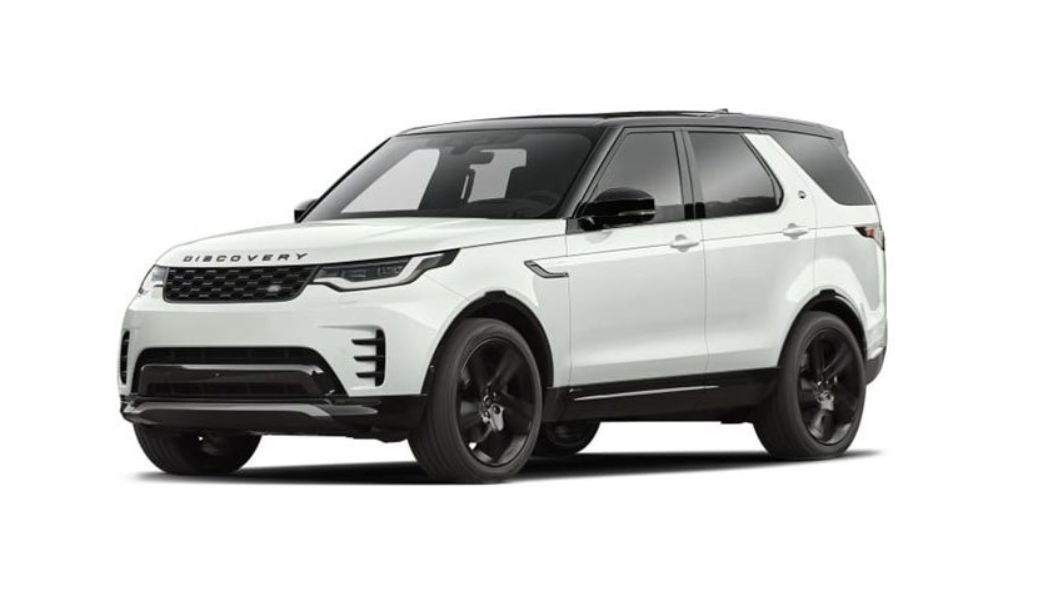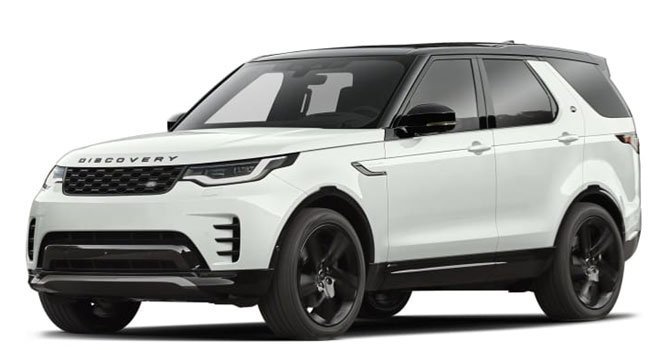2023 Land Rover Discovery VEHICLE RECOVERY Owners Manual




2023 Land Rover DISCOVERY VEHICLE RECOVERY


FRONT TOWING EYE
The towing eye at the front of the vehicle is designed for on-road recovery only. If it is used for any other purpose, it may result in vehicle damage and serious injury.
Use extreme caution when moving or towing the vehicle. Death or serious injury may occur.
Remove the front towing eye cover before driving off-road, to prevent damage or loss.
The front towing point is located behind a removable cover in the lower front bumper.
To remove the cover:
- Rotate each of the fasteners 90 degrees counter-clockwise with a coin or similar.
- Pull the cover forward from the back lower edge to release the two lower tabs and eight tags on the top edge of the cover.
To refit the cover:
- Offer up the cover and make sure the eight lugs at the top edge and the two tabs in the bottom edge engage with the holes in the bumper.
- Secure the cover in position by rotating each of the fasteners 90 degrees clockwise.
REAR TOWING EYE
The towing eye at the rear of the vehicle is designed for on-road recovery only. If it is used for any other purpose, it may result in vehicle damage and serious injury.
Use extreme caution when moving or towing the vehicle. Death or serious injury may occur.
Remove the rear towing eye cover before driving off-road, to prevent damage or loss.
The rear towing eye may be used to tow another vehicle, if required.
The vehicle towing eye is located in the following positions:
- Vehicles with trailer hitch tow ball.
Note the fitted position of the towing eye cover before removal.
The rear towing eye is located behind a cover in the rear bumper.
To remove the cover:
- Rotate the four fasteners 90 degrees counter-clockwise with a suitable coin, or a similar object.
- Release the eight upper tabs.
To fit the cover:
- Make sure all the clips are correctly aligned.
- Turn the fasteners a quarter-turn clockwise.
TRANSMISSION PARK RELEASE
Make sure the following warnings and cautions have been read and fully understood before carrying out the transmission park release. Failure to follow the guidance given could lead to serious injury, death, or vehicle damage.
Before attempting the transmission park release procedure, make sure that the vehicle is secured with wheel chocks and apply the Electric Parking Brake (EPB). Failure to secure the vehicle can result in unexpected movement of the vehicle, which could result in personal injury.
When Park [P] is released, the vehicle is free to move. Be sure to secure the vehicle to prevent unwanted movement. Unwanted movement of the vehicle can result in vehicle damage.
The transmission must be removed from Park (P) before recovering the vehicle. Failure to follow the transmission park release procedure can result in serious transmission damage.
The transmission park release procedure locks the transmission in Neutral (N) and prevents the transmission from automatically selecting Park (P).
The following conditions must be satisfied before the transmission park release procedure will function. If any of these conditions are not met, the transmission park release procedure will not work.
- The vehicle must be stationary.
- The EPB must be applied.
- The vehicle battery must be sufficiently charged.
- The engine cranks but fails to start.
To release the park mechanism, follow this procedure:
- Apply the EPB. See ELECTRIC PARKING BRAKE (EPB).
- Press the Start button. Do not press the brake pedal when pressing the Start button at this stage.
- Press and hold the brake pedal with your left foot during the next stages of the process.
- Press and hold the accelerator fully for one second, then release fully.
- Press and hold the accelerator fully for four seconds then release fully. Depending on vehicle specification, the instrument panel may display a message to confirm the gearbox is in service mode.
- Press the Start button to release from Park (P). The gear selector displays a flashing (P).
- The engine will attempt to start several times.
- Wait for the engine to complete the attempts to start, which can take up to 30 seconds.
- Move the gear selector to the Neutral (N) position. The instrument panel and gear selector displays (N). See AUTOMATIC TRANSMISSION.
- Release the brake pedal.
The vehicle can be towed once the EPB has been released as result of the above procedure. See ELECTRIC PARKING BRAKE (EPB).
The EPB may remain applied due to a critical system failure. Towing the vehicle with the EPB applied may result in damage to the vehicle’s tires.
If the vehicle remains stationary for longer than 10 minutes the system automatically re-engages Park ‘P’ gear to prevent battery drainage.
If the vehicle battery is not sufficiently charged the transmission park release procedure cannot be completed. The vehicle cannot be towed until the park release procedure is successfully completed\
If the engine is unable to crank, the park release procedure cannot be completed. The vehicle cannot be towed until the park release procedure is successfully completed.
OFF-ROAD RECOVERY
If the towing points are to be used for off-road recovery, it is essential that off-road driver training, covering recovery techniques is undertaken.
Further information on off-road driver training can be found at: www.landroverexperience.com.
TRANSPORTING THE VEHICLE
Use extreme caution when moving or towing the vehicle. Death or serious injury may occur.
The front and rear tie down points must be used only for securing the vehicle during transportation. If they are used for any other purpose, it may result in vehicle damage and serious injury.
The recommended method for recovery/transporting the vehicle is by a trailer designed for that purpose.
Always use qualified persons to perform recovery and to make sure that the vehicle is secured correctly.
If the vehicle’s electronics are operational, the air suspension must be set to access height, before securing the vehicle to a recovery vehicle or trailer. Failure to do so can result in damage to the vehicle.
TOWING THE VEHICLE ON FOUR WHEELS
The vehicle should be recovered with all four wheels clear of the ground, i.e., on a trailer. However, if the vehicle cannot be recovered by using the correct method, in an emergency, the vehicle can be towed on all four wheels for a short distance. Please adhere to the following guidelines.
The recovery agent MUST activate the Emergency park release before towing commences. This procedure is covered in a separate publication for service personnel.
If transmission Neutral (N) is selected and the engine is then switched off, the transmission will automatically select Park (P) after 10 minutes has elapsed. At this point, if the Emergency park release has not been activated and the vehicle is being towed, serious damage to the transmission will result. There is also a danger to personal safety.
If the engine cannot be used during towing, there will be no power assistance to the braking or steering systems. This will result in much greater effort to steer and stop the vehicle and in a greatly increased stopping distance.
Only tow the vehicle in a forward direction with all four wheels on the ground. Towing in a reverse direction or with only two wheels on the ground, can cause serious damage to the transmission.
Do not tow the vehicle for more than 30 miles (50 km). Do not exceed 30 mph (50 km/h). Towing for a greater distance, or at a higher speed, may result in serious damage to the transmission.
Do not tow the vehicle if the transmission cannot be set in Neutral (N), or if the rear electronic differential has failed in the locked position. Doing so can cause serious damage to the transmission.
The following procedure must be carried out carefully to prevent damage to the vehicle:
- Secure the towing attachment from the recovery vehicle to the front towing eye. See FRONT TOWING EYE.
- With the Electric Parking Brake (EPB) applied, switch on the ignition.
- Apply the brake pedal and rotate the selector to Neutral (N).
- Activate the Emergency park release.
- Switch off the ignition and leave the Smart key in a secure place inside the vehicle.
- The ignition may be switched on to allow operation of the turn signals, brake lamps, etc.
- Release the EPB before towing the vehicle.
Leaving the ignition switched on for extended periods will drain the vehicle’s battery.
AFTER TOWING ON FOUR WHEELS
- Apply the Electric Parking Brake (EPB).
- Switch on the ignition and apply the brake pedal.
- Rotate the gear selector to Park (P).
- Deactivate the Emergency Park Release.
- Switch off the ignition and remove the Smart key from the vehicle.
- Remove the recovery vehicle’s towing attachment from the front towing eye and refit the cover.
Use extreme caution when detaching towing equipment. Vehicle movement is possible which can result in serious injury.
Recent Posts
VW Jetta Engine Fuse Box Diagram
Access the comprehensive 2010-2018 VW Jetta Passenger Fuse Box Diagram to troubleshoot electrical issues effectively.…
VW Jetta Passenger Fuse Box Diagram
Explore the comprehensive VW Jetta Passenger Fuse Box Diagram to troubleshoot electrical issues effectively. Understand…
2023 Ford F-150 Lightning Fuse Box Diagram
Under Hood Fuse Box Location Remove the front luggage compartment cover. Under Hood Fuse Box…
2022 Kawasaki NINJA H2 SX SE Brake Lever Adjuster Owner’s Manual
2022 Kawasaki NINJA H2 SX SE Brake Lever Adjuster Owner's Manual NOTICE Only adjust the front…
2023 Land Rover Range Rover Evoque Exiting The Vehicle Owners Manual
2023 Land Rover Range Rover Evoque Exiting The Vehicle SINGLE LOCKING WARNING Before exiting the…
2023 Land Rover Range Rover Evoque Front Seats Owners Manual
2023 Land Rover Range Rover Evoque Front Seats FRONT SEAT SAFETY Make sure to read…
